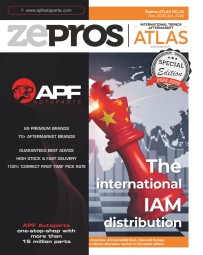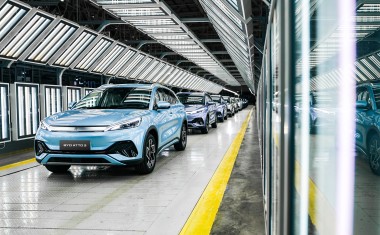
An electrically stimulated Sino-Chinese market

The removal of two tax incentives in China, targeted towards new energy vehicles (NEVs), namely battery electric vehicles, plug-in hybrids, and fuel cell vehicles, caused a decline in electric vehicle sales at the beginning of 2023.
However, the market quickly rebounded before the summer, a mid-price wars and provinces maintaining their regional subsidies. As a result, 8.5million electric vehicles were sold in 2023, constituting 36% of the total 24 million vehicles sold, with Chinese manufacturers dominating the domestic market. Twice in 2023, the market share of Chinese manufacturers in China surpassed that of importers. “The Chinese automotive market is evolving into a Sino-Chinese market with over 150 local brands, making it increasingly challenging for foreign brands. While German brands are still significant, even Volkswagen is facing challenges, with a Full Electric penetration of 2.5% in April 2023 compared to 20% for BYD during the same period. Chinese consumers are increasingly inclined to support local and Chinese brands, posing a threat to the presence of Western brands in the market.” According to market observers, foreign manufacturers are also facing challenges as they fall behind in incorporating electric vehicles into their overall operations, exacerbating their difficulties in the Chinese market. Chinese manufacturers have accumulated years of experience in this vehicle category, providing them with the time and, most importantly, the resources to vertically integrate an entire sector–from rare earth extraction and refining to battery and engine manufacturing, transmission, assembly, and integration into the value chain of essential components for sales and after-sales, all within a context of advanced digitalisation. Technological giants like Alibaba have capitalized on the data explosion, diversifying and offering numerous services to the Independent Aftermarket. Marketplaces directly engage with suppliers, contributing to the consolidation of an aftermarket that, despite its hyper-fragmentation, is expected to experience a 9% annual growth rate over the next five years, reaching $244 billion (China Insights Consultancy). In China, where everything evolves rapidly, the aftermarket is undergoing a complete restructuring driven by electric vehicles.
For reference, in 2021, McKinsey projected a combined Passenger Car and LCV fleet of 400 million vehicles by 2030. Building on this outlook and assuming a fleet growth rate of 5% annually, Roland Berger estimated that vehicles over 10 years old would constitute 17% of the total number of cars on the road, with those aged 7 to 10 years making up 32%. Consequently, by 2030, the older half of the fleet– the segment that demands the most parts and services–will be available to IAM. This equates to 200 million vehicles, predominantly ICE.
Click to access the 2024 International IAM distribution Atlas by zepros






